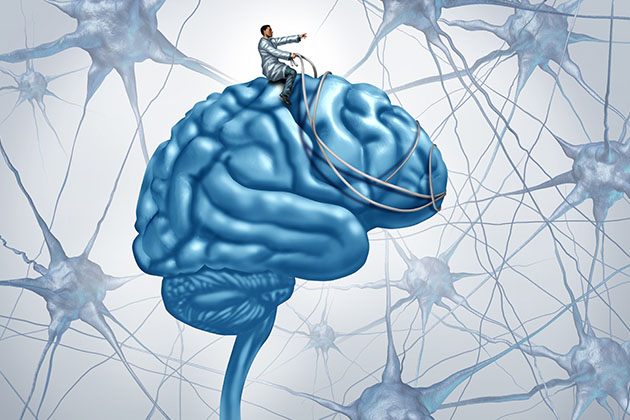Research has shown that another タンパク質 called tau is responsible for early symptoms of アルツハイマー病 そして、この情報は治療法の開発に役立つかもしれません。
アルツハイマー Disease (AD) or simply アルツハイマー has no cure and it also cannot be prevented. Deferring the onset of symptoms of アルツハイマー for up to 10-15 years can certainly impact the lives of 患者, their families and healthcare givers. Currently, only a late diagnosis of AD can be made and by that time function of the brain is largely weakened. Key characteristics of アルツハイマー is build-up of plaque and defective タンパク質 around neurons inside the brain which are responsible for advancement of the 病気. Multiple research shows that higher levels of タンパク質 amyloid in the 脳 ADの発症の非常に初期の指標です。 に関する研究のほとんど アルツハイマー病 これがどのように理解することに焦点を当ててきました タンパク質 amyloid beta accumulates in the brain. Positron Emission Tomography (PET) imaging technique has been used to visualize deposits of amyloid in Alzheimer’s patients. These images and analysis of brain tissue has shown that people with Alzheimer’s definitely have higher accumulation of amyloid タンパク質 in their brains compared to healthy people.
別のものはありますか タンパク質 責任者?
Though it is seen that even after amyloid beta gets accumulated and Alzheimer’s disease is at its earliest stage, many patients still have their cognitive processes – both memory and thought – very much intact. This is indicative of a scenario in which amyloid タンパク質 must be changing first and then there must be some other factor responsible which researchers predicted could be a second タンパク質 present inside brain cells called tau. It could even be a combination of both because of which a patient may show mild cognitive impairment. Interestingly, even people who have no signs of Alzheimer’s have sometimes amyloid タンパク質 accumulated in their brains. Recent studies have generated interest in タウタンパク質 which though has been associated with the disease but hasn’t been the focus of much research. One obstacle in pursuing study on tau タンパク質 has been that a non-invasive way to get an image of this protein inside a living person’s brain has been only lately achieved. Researchers at Washington University School of Medicine, St. Louis have used a previously unknown imaging agent which binds to the tau protein (without causing side effects) making it visible in PET scans. In their study they aimed to understand the significance of tau as a marker of cognitive decline – a critical characteristic of アルツハイマー. Their study is published in Science 翻訳医学。
In the study, 46 participants – 36 healthy adults and 10 patients with mild AD – underwent brain imaging which used the new PET imaging agent. Their brain images were then compared to understand decline in cognitive abilities due to AD. The extent of cognitive impairment was evaluated using cerebrospinal fluid measures, clinical dementia rating and paper tests for memory and other brain functions. The severity of cognitive dysfunction was analysed along with images. Results seen in 10 patients (with mild AD) in PET scans clearly showed that tau is a better predictor of symptoms of cognitive decline compared to amyloid. And tau protein might be more closely linked to symptoms like memory loss. This new tau protein (called T807) is seen to be critical in firstly understanding progression of アルツハイマー and secondly to gather information about which portions of the brain are affected and involved in disease progression. Though increased tau protein is already an established marker of アルツハイマー but for the first-time regions in the brain which accumulate these abnormal proteins have been pinpointed. As long as tau is deposited in the hippocampus of the brain, its well tolerated. Its spread to other areas like temporal lobe (which is associated with memory processing) can be damaging which is reflected in memory and attention tests. This allows potential use of tau as a diagnostic tool. Such a situation was not applicable to amyloid protein and this confirmed that tau protein can predict more accurately when a person is transitioning from an early stage – with no symptoms – to mild アルツハイマー disease. A combination of both amyloid and tau could also be responsible. The study does have some limitations because the images are basically ‘one snapshot’ of the brain at one point of time and they cannot wholly depict association of tau and mental deterioration.
アミロイドベータとタウの両方で造影剤が利用できるようになったため、どちらがより重要であるかについての議論を続けることができますが、必要なツールを使用して、これら両方のタンパク質を標的とする実験的治療の効果を研究できます。 タウの新しい造影剤はすでに臨床試験で承認されており、タウタンパク質の上昇を伴うさまざまな障害(脳損傷や外傷など)の脳イメージングに使用できます。 アルツハイマー病の早期診断が、アミロイドおよびタウタンパク質の蓄積のための薬剤の設計に役立つ可能性があるという大きな希望があります。 研究者たちは、将来、患者の脳の正確なシナリオに基づいた、パーソナライズされたアルツハイマー病の治療法を楽観的に提案します。
***
{引用元のリストにある以下のDOIリンクをクリックすると、元の研究論文を読むことができます}
ソース
Brier MR2018。アルツハイマー病におけるタウとアブの画像、CSFの測定、および認知。 科学トランスレーショナル医学。 8(338)。 https://doi.org/10.1126/scitranslmed.aaf2362
***






































